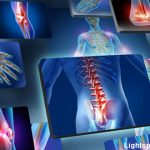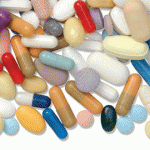 ACR CONVERGENCE 2021—In a post-hoc analysis, treatment with denosumab proved superior to risedronate for increasing lumbar spine and total hip bone mineral density (BMD) in patients with rheumatoid arthritis (RA) and glucocorticoid-induced osteoporosis.1 These data were presented by Jonathan Adachi, MD, professor of medicine, McMaster University, and staff rheumatologist at St. Joseph’s Healthcare, Hamilton, Ontario, Canada, during ACR Convergence 2021.
ACR CONVERGENCE 2021—In a post-hoc analysis, treatment with denosumab proved superior to risedronate for increasing lumbar spine and total hip bone mineral density (BMD) in patients with rheumatoid arthritis (RA) and glucocorticoid-induced osteoporosis.1 These data were presented by Jonathan Adachi, MD, professor of medicine, McMaster University, and staff rheumatologist at St. Joseph’s Healthcare, Hamilton, Ontario, Canada, during ACR Convergence 2021.
The original phase 3 study was an active, controlled, double-blind, double-dummy study that showed treatment with denosumab was superior to risedronate for BMD increases in patients with osteoporosis who were treated with glucocorticoids (NCT01575873).2 The post-hoc analysis included patients who were either starting at least 7.5 mg of prednisone daily or the equivalent for less than three months prior to screening or continuing at least 7.5 mg of prednisone treatment (glucocorticoid) daily or the equivalent at least three months prior to screening.
Patients were randomly assigned to receive either 5 mg of risedronate daily or 60 mg of denosumab every six months for 24 months. Patients also received at least 1,000 mg of calcium and 800 international units of vitamin D daily.
The primary outcome was a greater mean difference in the percent change from baseline in the lumbar spine BMD, determined by dual x-ray absorptiometry (DXA), at month 12 for denosumab compared with risedronate. Secondary objectives obtained at months 12 and 24 included comparisons of the mean percent change from baseline in lumbar spine, total hip and femoral neck BMD, as well as in serum type 1 collagen C‑telopeptide (sCTX) and procollagen type 1 N-telopeptide (P1NP). The study also assessed safety.
The Results
The post-hoc analysis included 300 patients with RA: 143 were treated with denosumab and 157 were treated with risedronate. The mean prednisone-equivalent doses were around 10.5 mg (± 4.2 to 4.8) at baseline for both study groups. At 12 months, a significant mean difference (95% confidence interval) in the percent change from baseline in BMD was observed between the two groups: 1.8% for the lumbar spine, 1.9% for the total hip and 1.5% for the femoral neck. At month 24, the mean changes for denosumab were: 3.2% for the lumbar spine, 2.3% for the total hip and 2.1% for the femoral neck.
During the first five months of treatment, sCTX and P1NP levels significantly decreased in patients treated with denosumab compared with those treated with risedronate. However, at months 12 and 24, no significant differences were observed in the percent change from baseline between the two treatment groups.

